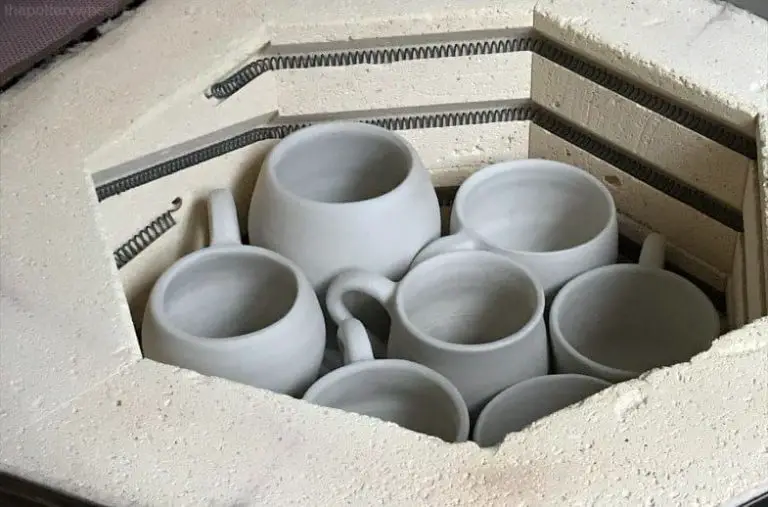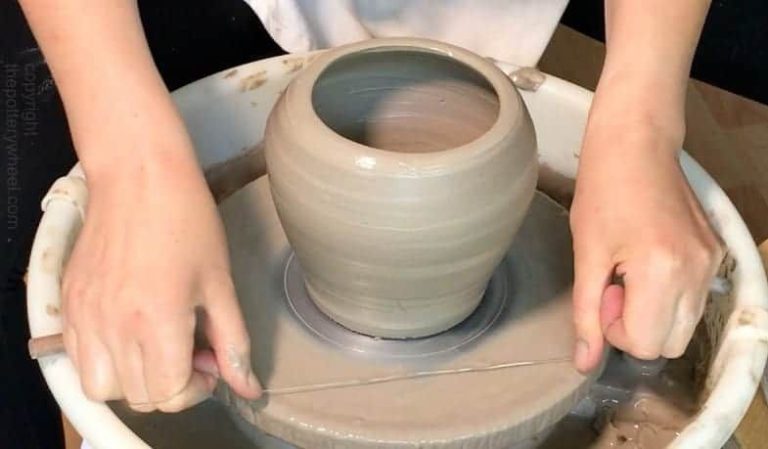Can You See Better With Ceramic Tint?
What is ceramic tint?
Ceramic tint is a type of window film made with ceramic nanoparticles embedded in the tint material. Unlike traditional dyed window tints, ceramic tint works by reflecting and absorbing heat before it can enter the window. The ceramic particles in the film help block more of the infrared light that causes heat to build up in a vehicle.
Ceramic tint has several advantages over traditional tint films:
- Better heat rejection – Ceramic tint blocks up to 60% of infrared light from entering, keeping the interior cooler (1).
- Higher clarity – Ceramic tint films tend to have a lighter tint, resulting in increased visibility compared to darker traditional films. Many formulations allow over 60% visible light transmission (1).
- UV blocking – Ceramic tint can block up to 99% of UV rays from the sun (2). This helps protect vehicle interiors from sun damage and fading.
The main downside to ceramic tint is the higher cost compared to traditional dyed films. However, the increased performance may be worth the extra investment for some drivers.
Overall, ceramic tint provides superior heat, glare, and UV protection compared to standard tints. The lighter tint also results in less light blockage for better outward visibility at night.
History of ceramic tint
Ceramic tint was first developed in the 1990s as a new type of window film made of metal integrated with dye, as an advancement from earlier metallic and dyed films (Source). This “hybrid” ceramic film provided better heat rejection properties than past films.
Key innovations in ceramic tint came from major window film manufacturers like 3M, who launched the first commercially available ceramic tint in 1996 under the brand name 3M Colorstable. Other companies like Eastman and MADICO also began developing their own versions of ceramic film (Source).
While initially more expensive than traditional dyed films, ceramic tint grew in popularity through the 1990s and 2000s as prices dropped. It’s now one of the most popular and highest-performing types of automotive and architectural window tint.
How is ceramic tint applied?
The application process for ceramic tint is more complex than traditional dyed film tints. It requires specialized skills and tools to properly install.
To apply ceramic tint, the window surface must be thoroughly cleaned and prepared first. Next, the ceramic tint material itself is prepared by cutting it to the precise size needed for each window. An application fluid is then used to allow the film to slide into place on the glass.
The ceramic tint is carefully applied to avoid bubbles and ensure proper adhesion. The installer squeeges out any moisture and uses a heat gun to form the material to the exact shape of the window. Finally, the edges are trimmed for a clean finish.
Applying ceramic tint requires patience, precision, and specialized tools like film cutters, squeegees, application fluid, and heat guns. It also requires proper training on the best techniques for flawless installation.
Overall, the application process for ceramic tint is much more difficult than traditional tint. It should be performed only by experienced professional installers with the proper equipment and skills.
Benefits of ceramic tint
Ceramic tint offers several advantages over traditional dyed film tint. Some of the key benefits include:
UV protection: Ceramic tint can block up to 99% of UV rays from entering the vehicle, helping protect passengers from sun damage and skin cancer (TopLine Tints). The nano-ceramic technology in ceramic tints offers superior UV blocking compared to standard films.
Heat rejection: By reflecting more infrared light, ceramic tint can reduce heat buildup inside a vehicle by up to 60% (Premier Detailing and Wash). This keeps interiors cooler and helps reduce air conditioning usage.
Glare reduction: Ceramic particles in the tint help scatter and diffuse light to cut down on glare and eyestrain. This makes driving more comfortable and reduces distraction (TopLine Tints).
Improved night vision: Ceramic tint maintains clarity so drivers can see better at night. The non-metal composition avoids signal interference issues (Premier Detailing and Wash).
Durability: Nano-ceramic technology makes the tint highly scratch and fade resistant. Quality ceramic tints come with 5+ year warranties for longevity (Fairfield Tint Masters).
Downsides of Ceramic Tint
While ceramic tint has many benefits, there are some potential downsides to consider as well:
Higher upfront cost – Ceramic tint films tend to cost 20-50% more than traditional dyed films. The extra cost comes from the more complex multilayer construction and proprietary technology used in ceramic tints. Expect to pay a premium for the performance benefits of ceramic tint (Ceramic Tint Vs. Standard Films: Pros and Cons).
Limited color options – Ceramic tints are primarily available in darker shades like charcoal and black. Some manufacturers offer lighter shades, but the selection is more limited versus traditional tints. If you want a specific lighter color, ceramic may not be able to deliver it.
Installation challenges – The stiffness of ceramic tint makes it more difficult for installers to work with. It takes greater skill and patience to apply ceramic tint without bubbling or creasing. Be sure to find an experienced installer familiar with ceramic films.
Reduced radio reception – The metallic particles in ceramic tint can interfere with AM/FM radio reception and cell phone signals. The impact is usually minor, but noticeable in some cases. Consider amplifying antennas if reception is a major concern.
Ceramic vs. traditional tint
Ceramic tint and traditional tint both offer ways to reduce glare and heat in a vehicle, but they differ in some key aspects. Ceramic tint contains nano-ceramic particles that improve durability, clarity, and heat rejection compared to traditional dyed tint films (Source).
Some pros of ceramic tint:
- More durable – resistant to scratches and fading
- Higher clarity and less haze
- Better heat rejection – blocks more infrared rays
- Higher light transmission for same visible light absorption
However, ceramic tint also has some downsides:
- More expensive upfront cost
- Slightly more difficult installation process
- Fewer tint levels available
Traditional dyed films are less expensive and come in more color options. But they fade faster, are less durable, and don’t reject heat as well. Overall, ceramic tint is a premium product that outperforms traditional films, albeit at a higher price point.
How to care for ceramic tint
Caring for ceramic tint properly is important to maintain its appearance and effectiveness over time. There are a few key things to keep in mind:
Cleaning and maintenance
Use a soft, lint-free microfiber cloth and a non-ammonia based glass cleaner to gently clean the tinted windows according to detailers. Avoid using paper towels or abrasive cleaners that could scratch the film. Clean the windows regularly to prevent buildup.
Protecting from scratches/damage
Be careful not to bump or scrape the windows when cleaning the inside or outside. Don’t use scrapers or razor blades on the tint. Also avoid letting the windows get too hot, which could cause the film to bubble or peel, reducing its lifespan.
Improving longevity
Besides gentle cleaning, also consider applying a ceramic tint coating which can provide an extra layer of protection from scratches and UV rays according to experts. Using sun shades when the car is parked can also help reduce heat buildup and fading.
When to Get Ceramic vs. Traditional Tint
The decision between ceramic tint and traditional tint often comes down to the specifics of your situation. Here are a few key factors to consider:
New vs. Existing Windows
Ceramic tint adheres directly to the glass, while traditional tint uses an adhesive layer. This makes ceramic tint ideal for new windows, as it won’t damage the factory seal. For existing windows that may have minor flaws or scratches, traditional tint can help hide imperfections. According to Tint World, ceramic tint is best for newer vehicles where you want to maintain clarity, while traditional tint works well for older windows.
Vehicle Type
Ceramic tint is often recommended for luxury, performance, and high-end vehicles where maintaining clarity and heat reduction are top priorities. The sleek look and durability of ceramic tint suits these vehicle types. For more basic vehicles, traditional tint may provide sufficient benefits at a lower cost.
Climate Considerations
In hot climates, ceramic tint provides superior heat rejection, blocking up to 60% of heat compared to 40% for traditional tint according to Chicago Auto Pros. This can make a significant difference in interior vehicle temperature. In colder climates, both ceramic and traditional tint help reduce glare from snow and ice. Ceramic tint resists frost buildup better than traditional tint.
Overall, opt for ceramic tint if you want the ultimate in clarity, heat reduction and longevity, and don’t mind paying extra for premium performance. Traditional tint is more budget-friendly for basic UV and heat protection.
Cost of Ceramic Tint
The cost of ceramic tint is generally higher than traditional dyed films. For professional installation, expect to pay an average of $120-150 per window for ceramic tint according to All Florida Tinting. The price can vary greatly based on factors like:
- Geographic location – Prices tend to be higher in areas like California and New York
- Experience of the tint shop – More established, specialty shops often charge more
- Type of ceramic – Higher-end nano-ceramic films are more expensive
- Quality/brand – 3M ceramic tint tends to be pricier than generic films
- Vehicle type – Prices are higher for larger vehicles like SUVs and trucks
- Additional services – Add-ons like clear window brow or windshield tint can increase cost
You can save 20-30% on the cost of ceramic tint by doing it yourself. However, the film is very rigid and challenging to install correctly without professional tools and experience. Improper DIY installation can lead to bubbling, peeling, or an uneven appearance.
Ceramic Tint Specialists
When getting ceramic tint installed on your vehicle, it’s important to find an experienced installer who specializes in ceramic films. Here’s an overview of major ceramic tint providers in the Los Angeles area:
Olympic Tint is one of the top rated installers on Yelp, with over 200 reviews and a 5 star rating. They are experts in installing high-end ceramic films from brands like Xpel and offer lifetime warranties on their work.
Bravo Tint is another leading installer in LA with over 100 Yelp reviews. They focus exclusively on premium ceramic tints and also offer manufacturer-backed warranties.
When choosing a ceramic tint shop, look for installers that are authorized dealers for major brands like Xpel, LLumar, and FormulaOne. They should have at least 5 years of experience working specifically with ceramic films versus traditional dyed films.
Questions to ask potential installers:
- Are you an authorized dealer for premium ceramic tint brands?
- How long have you been installing ceramic films?
- Do you offer any warranties on ceramic tint installations?
- Can I see examples of previous ceramic tint jobs you’ve done?
By finding an experienced, specialty installer for your ceramic tint, you can help ensure the best results from this premium window film product.



